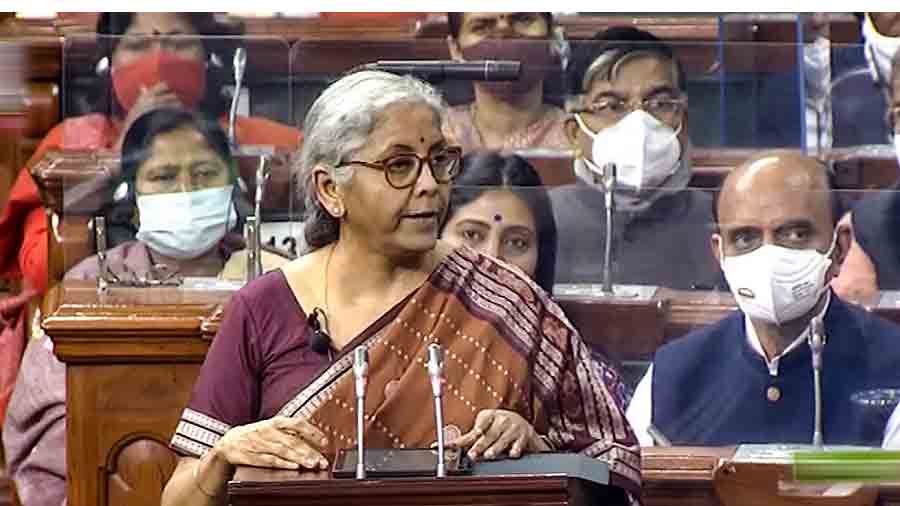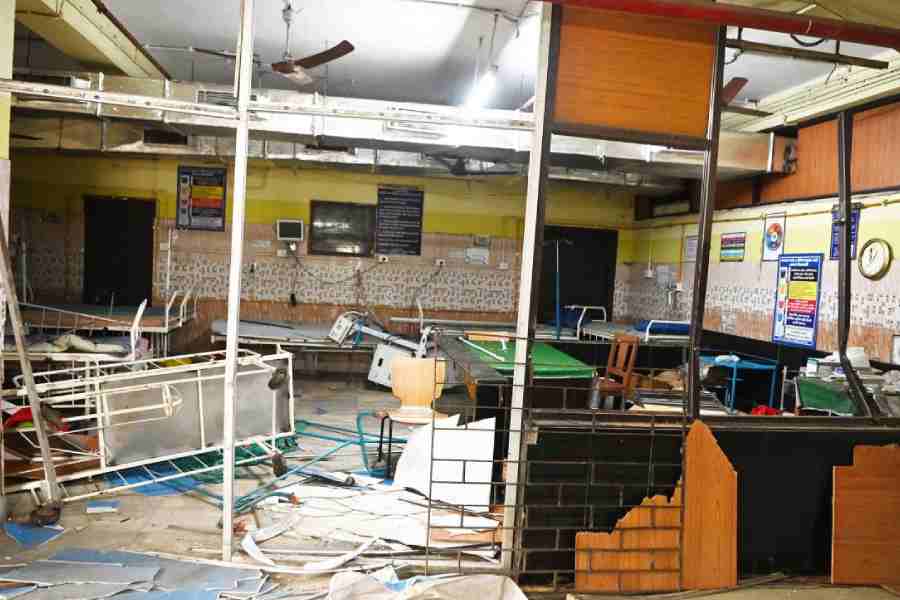The government has announced a budget propelled by “seven engines” of growth that boosts infrastructure spending on highways, affordable housing and mass transport in a bid to move the economy into high gear as the country recovers from the pandemic.
The government is projecting growth of 8.0 to 8.5 per cent in the coming year starting April, slower than this year’s forecast expansion of 9.2 per cent, but still the fastest among major economies.
The budget’s “is driven by seven engines” that include spending on highways, railways, mass transport, energy and logistical infrastructure, Finance Minister Nirmala Sitharaman told parliament.
Here's the highlight of the Union Budget:

“All seven engines will pull forward the economy in unison,” Sitharaman said as she unveiled the Rs 39.45 trillion budget for the financial year starting April 1 that will boost government spending by nearly 5 per cent from the current year.
There will be no changes on the personal income tax front. The government will be reducing the deficit to 6.4 per cent of GDP from 6.9 per cent this year, banking on increased tax revenues and revenue from the sale of state-owned assets including the disposal of an expected 5 per cent stake in insurance behemoth LIC.
“The overall sharp rebound and recovery of the economy is reflective of our country's strong resilience," Sitharaman told lawmakers.
The government will be spending on improving physical and digital to modernise the economy and make it more attractive to investors.
“The touchstone of the master plan will be world-class, modern infrastructure and logistics synergy among different modes of movement of both people and goods, and location of projects," Sitharaman said.
Among the key initiatives will be the introduction of a digital currency spearheaded by the central bank that “will give a big boost to the digital economy. A digital currency will also lead to a more efficient and cheaper currency management system," Sitharaman said.
However, earnings on cryptocurrencies will now be taxed at 30 per cent.
The Budget prioritised economic expansion over fiscal consolidation.
"This Budget continues to provide the impetus for growth," she asserted.
Seven engines of growth
The Budget's "approach is driven by seven engines," Sitharaman said, listing roads, railways, airports, ports, mass transport, waterways and logistics infrastructure as the key areas.
"All seven engines will pull forward the economy in unison," complemented by energy transmission, IT communication, water and sewerage sector and social infrastructure, she said.
The Budget proposals laid the foundation for strengthening of different sectors like transportation and logistics sectors (Gati Shakti), banking and fintech (75 digital units to be set up), agriculture, EV sector (battery swapping policy), among others.
New IT returns system
On the direct tax front, to further ease compliances for taxpayers, a new IT returns system will be introduced and litigation will be reduced by restricting appeal rights of revenue authorities for consecutive years.
It marginally increased the time limit to commence production by March 31, 2024 for units opting for the beneficial corporate tax rate of 15 per cent.
To provide impetus to trust-based governance as a concept, an updated tax return system has been introduced wherein a taxpayer can file a tax return upon payment of specified taxes within 2 years from the end of the relevant assessment year.
Digital currency
She unveiled a proposal to introduce digital currency by the RBI and said digital assets will be taxed at 30 per cent with no deduction for any expenditure except the cost of acquisition of such asset.
To give a boost to the start-up community, she capped the surcharge on long-term capital gains at 15 per cent now.
New SEZ rules
As a push to promote exports, the SEZ Act will be replaced with new legislation and states shall become partners for development of infrastructure.
In tandem, reforms are also proposed to be undertaken in the Customs administration of SEZs, with facilitation related changes to be made.
From an indirect tax perspective, the concessional rate on capital goods imports under Project Import Scheme is proposed to be withdrawn, to promote domestic industry and imports will be taxed at 7.5 per cent now.
‘Betrayal of salaried classes’
The Congress criticised the Budget for not announcing any relief measures for the countries salaried and middle classes and accused Finance Minister Nirmala Sitharaman and Prime Minister Narendra Modi of betrayal.
Rahul Gandhi described it as “M0di Government’s Zer0 Sum Budget!” on Twitter.
Party general secretary and chief spokesperson Randeep Surjewala said the salaried and the middle classes have been affected due to pay cuts and high inflation. "India's salaried class and middle class were hoping for relief in times of pandemic, all-round pay cuts and back-breaking inflation. FM and PM have again deeply disappointed them in Direct Tax measures," Surjewala said on Twitter.
Bengal chief minister Mamata Banerjee was similarly critical. “Budget has zero for common people, who are getting crushed by unemployment and inflation,” she said in a tweet using capital letters for emphasis.
Paperless Budget
This year, the Budget was a paperless exercise for the second time in a row, as the finance ministry had earlier notified. The Union Budget 2022-23 was also made available on the Mobile App after the process of Union Budget presentation was completed in Parliament.
Sitharaman presented the budget in the backdrop of the Economic Survey, which was tabled in Parliament on Monday. The survey _ the annual report card of the state of the economy _ suggests that the finance ministry is fairly confident that it will be able to once again reclaim bragging rights as one of the fastest growing economies in the world.
The Modi government believes that the economy will grow by 8 to 8.5 per cent in the next fiscal — slower than the 9.2 per cent projection this year, but higher than most estimates from the pundits.
A bounceback
On the face of it, this year’s projected growth looks impressive. But the fact is that it’s a bounceback. It’s just 1.4 per cent above the pre-pandemic level of fiscal 2020 in real terms and many sectors involving personal contact such as trade, hotels, restaurants and transport will lag that figure even more. The surge of the new omicron variant also means “a threat to domestic passenger traffic,” so tourism and passenger traffic may take a while to pick up.
Also, the survey’s forecast is built around several assumptions: that the pandemic will have no further debilitating impact on the economy, the monsoon will be normal, the withdrawal of global liquidity by central banks in advanced economies will be fairly orderly and oil prices will hover in the range of $70-$75 per barrel.
The projections are in line with the forecast by the World Bank but lower than the 9 per cent projected by the IMF. They are slightly higher than that predicted by S&P and Moody’s.
“It is quite likely that some of these assumptions may not hold and there could be other risks emerging from rising geopolitical tensions (that have not been stated in the assumptions). Therefore, we should realistically expect sub 8% GDP growth in FY23,” Ranen Banerjee - Partner and Leader Economic Advisory Services, PwC India, said.
With inputs from PTI











